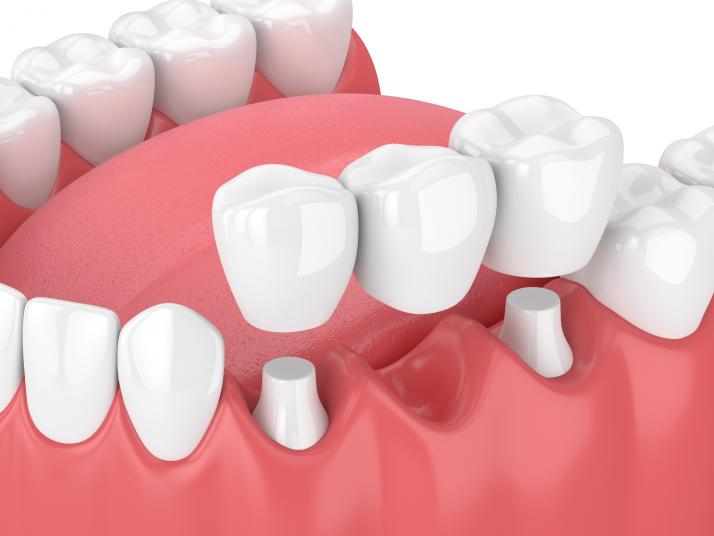Dental health has come a long way from the rudimentary techniques of the past. Among the most significant advancements in modern dentistry are innovations in dental crowns and bridges. These restorations, vital for maintaining oral health and aesthetics, have seen remarkable changes, making them more effective, durable, and aesthetically pleasing. This article explores these innovations, emphasizing how modern dentistry is transforming with the integration of new materials, technologies, and the influence of social media.
The Evolution of Dental Crowns and Bridges
Dental crowns, often referred to as “dental caps,” are used to cover and protect a damaged tooth, restoring its shape, size, strength, and appearance. Bridges, on the other hand, fill the gap created by one or more missing teeth, anchoring onto adjacent teeth or implants. Historically, these restorations were made from materials like gold, porcelain fused to metal, or ceramics, each with its own set of advantages and limitations.
Material Innovations
One of the most significant innovations in dental crowns and bridges is the development of new materials. Zirconia, for instance, has become a popular choice due to its exceptional strength and natural appearance. Unlike traditional porcelain-fused-to-metal crowns, zirconia crowns are metal-free, making them more biocompatible and less likely to cause allergic reactions or gum irritation.
Additionally, advancements in ceramic technology have led to the creation of lithium disilicate crowns, known for their high strength and excellent aesthetics. These crowns can be precisely color-matched to the patient’s natural teeth, providing a seamless and natural look.
CAD/CAM Technology
Computer-Aided Design and Computer-Aided Manufacturing (CAD/CAM) technology has revolutionized the creation of dental crowns and bridges. This technology allows for the precise design and fabrication of restorations, ensuring a perfect fit and reducing the margin for error. CAD/CAM systems use digital impressions taken from the patient’s mouth, which are then used to design the restoration on a computer. The design is sent to a milling machine that creates the crown or bridge from a block of ceramic or other material.
This technology significantly reduces the time required for the procedure. In some cases, patients can receive their crowns or bridges on the same day, eliminating the need for multiple dental visits and temporary restorations.
Digital Impressions and 3D Printing
Traditional impressions, often uncomfortable and messy, are being replaced by digital impressions. These are taken using intraoral scanners, which create a precise digital map of the patient’s teeth and gums. Digital impressions are more accurate, faster, and more comfortable for patients. They also eliminate the need for physical impression materials, reducing waste and the environmental impact.
3D printing is another groundbreaking technology making waves in dental restorations. It allows for the creation of highly accurate dental models, crowns, and bridges. This technology can produce complex structures that would be difficult or impossible to achieve with traditional methods, leading to better-fitting and more aesthetically pleasing restorations.
The Role of Social Media
Social media has played a significant role in modern dentistry, particularly in the field of dental crowns and bridges. Platforms like Instagram, Facebook, and YouTube have become valuable tools for dentists to showcase their work, educate patients, and stay updated with the latest trends and techniques.
Patients often turn to social media for recommendations and reviews when choosing a dentist or considering a dental procedure. Seeing before-and-after photos and patient testimonials can provide reassurance and help in decision-making. Dentists who actively engage on social media can build a stronger online presence, attract new patients, and establish themselves as experts in their field.
Moreover, social media has fostered a community where dental professionals can share their experiences, techniques, and innovations. This exchange of knowledge accelerates the adoption of new technologies and practices, ultimately benefiting patients.
Improved Aesthetics and Customization
Modern dental crowns and bridges are not only stronger and more durable but also more aesthetically pleasing. Advances in materials and technology allow for the creation of restorations that closely mimic the natural look of teeth. This is particularly important for front teeth, where appearance is crucial.
Customization has also reached new heights. With digital imaging and CAD/CAM technology, dentists can design crowns and bridges that perfectly match the shape, size, and color of the patient’s natural teeth. This level of customization ensures a more natural and harmonious smile.
Minimally Invasive Techniques
Innovations in dental crowns and bridges have also led to the development of minimally invasive techniques. For example, the use of digital impressions and CAD/CAM technology allows for more precise preparation of the tooth, preserving as much natural tooth structure as possible. Additionally, the improved strength and durability of modern materials mean that less tooth reduction is required.
The Future of Dental Crowns and Bridges
The future of dental crowns and bridges looks promising, with ongoing research and development aimed at improving materials, techniques, and patient outcomes. Emerging technologies like artificial intelligence and machine learning could further enhance the precision and efficiency of dental restorations. AI algorithms can analyze vast amounts of data to predict the best treatment options and outcomes, personalizing care for each patient.
The field of dental crowns and bridges has seen remarkable advancements, driven by innovations in materials, technology, and the influence of social media. These developments have led to stronger, more durable, and aesthetically pleasing restorations that enhance patient satisfaction and overall oral health. As modern dentistry continues to evolve, patients can look forward to even more exciting innovations in the years to come.




